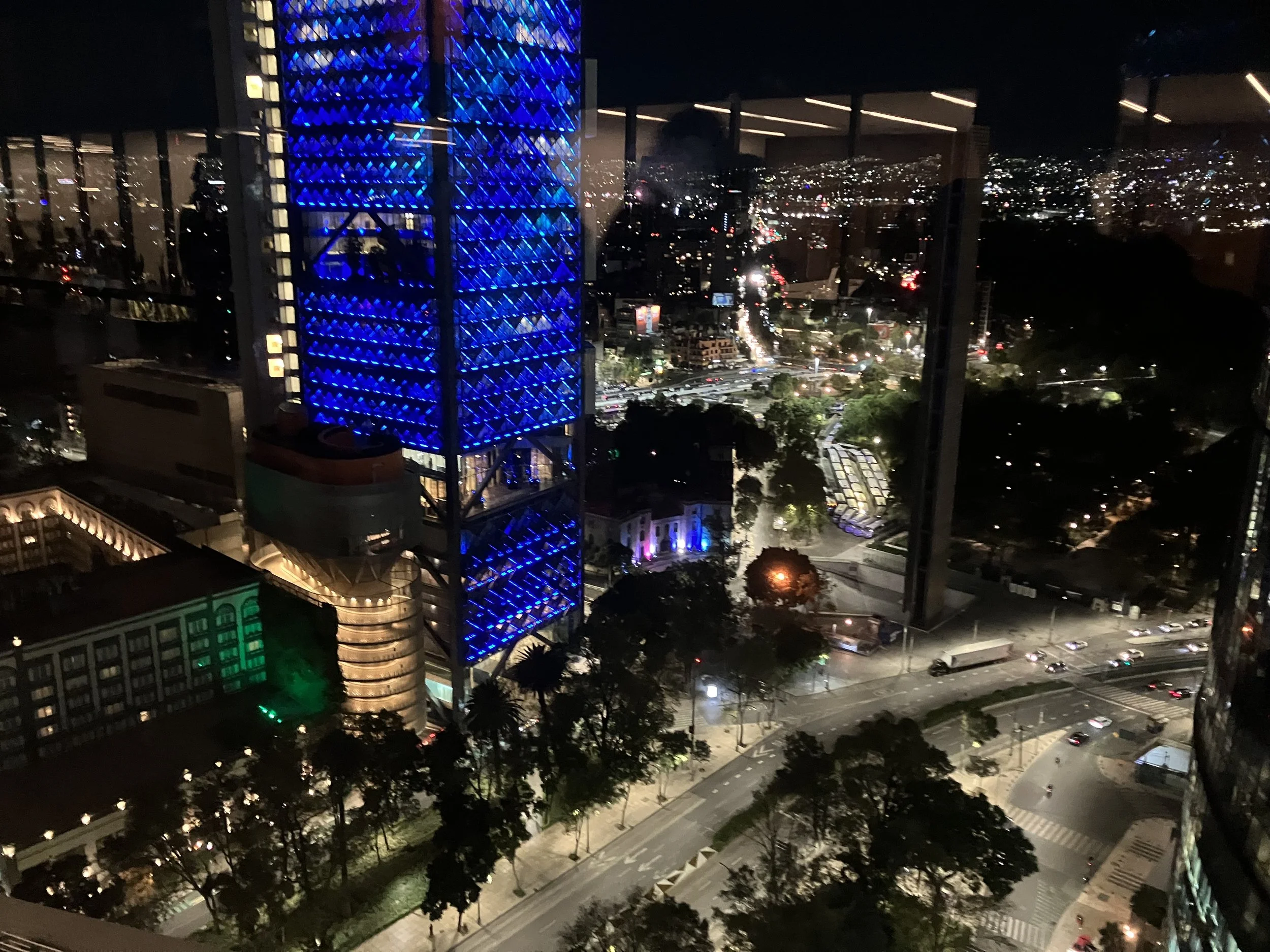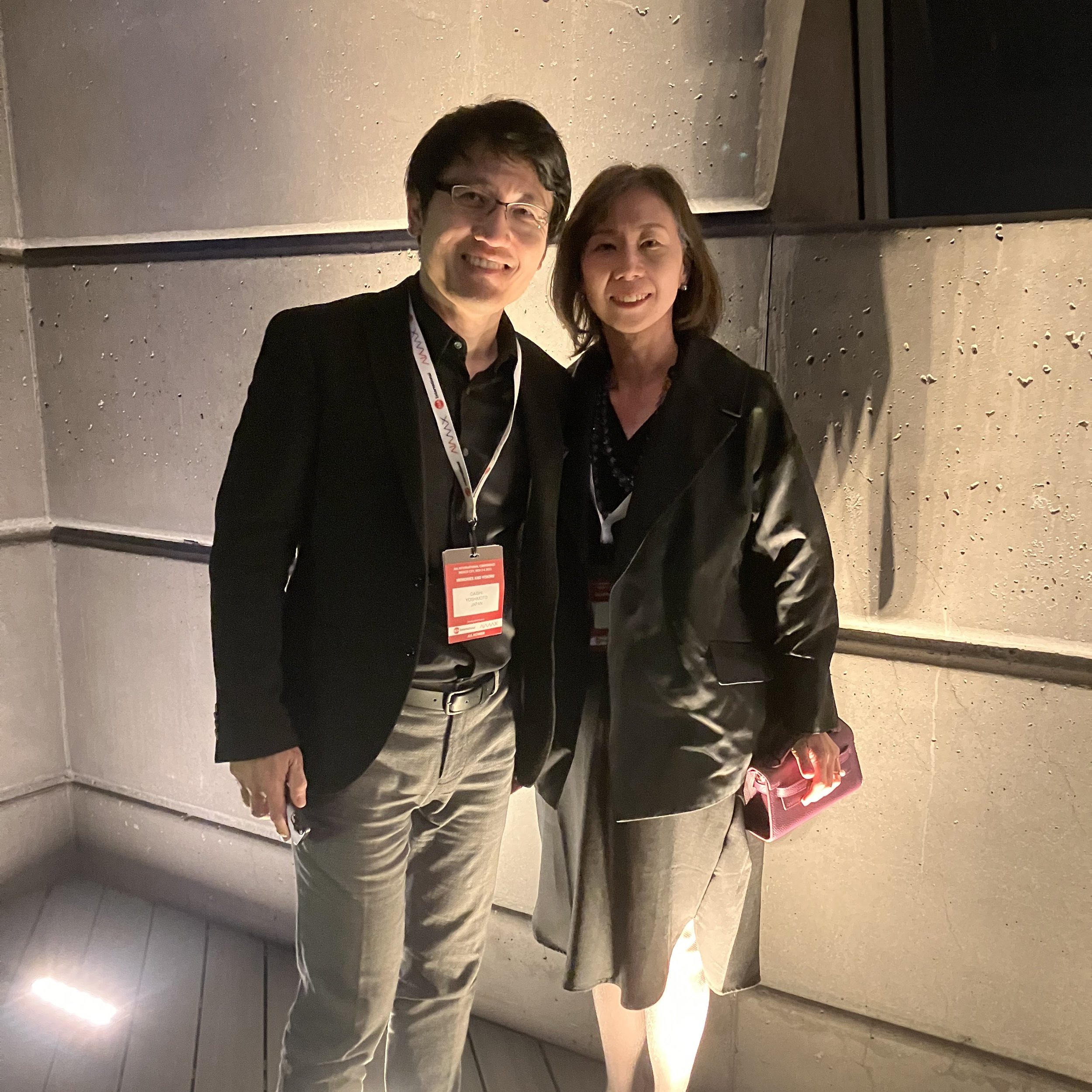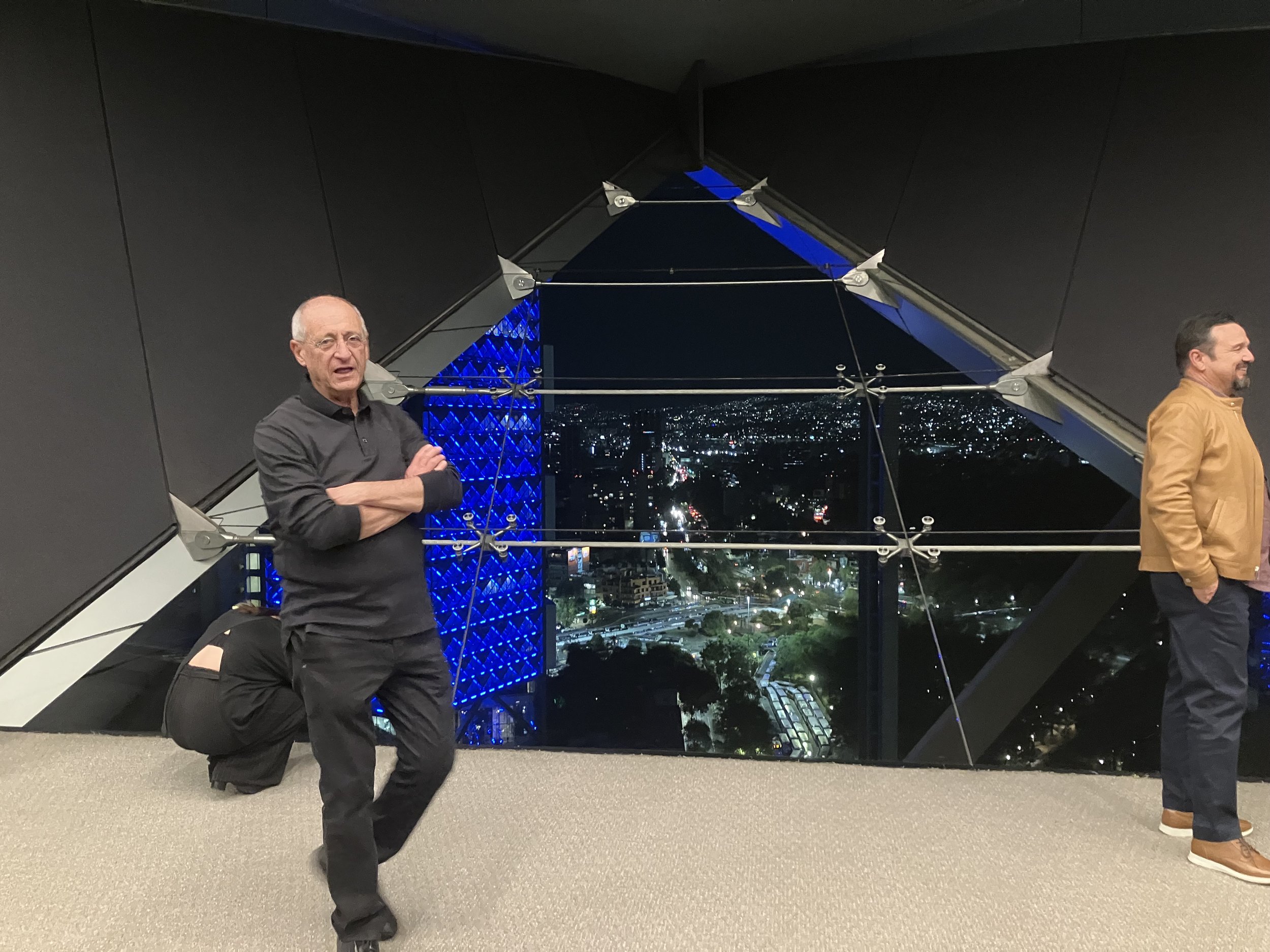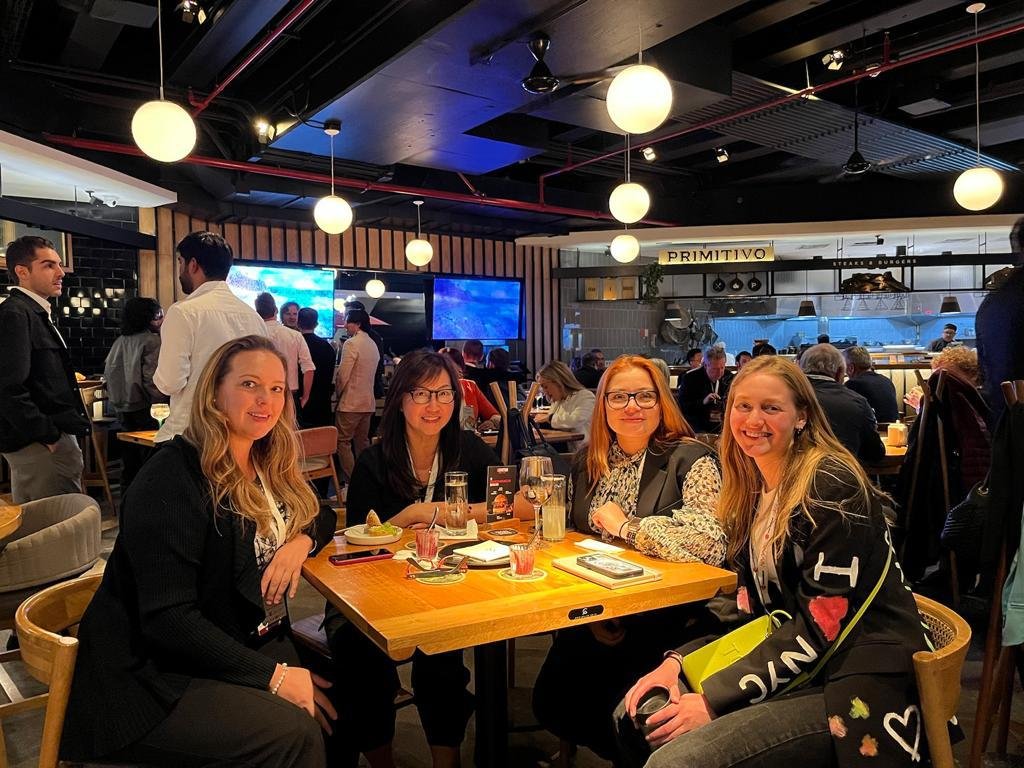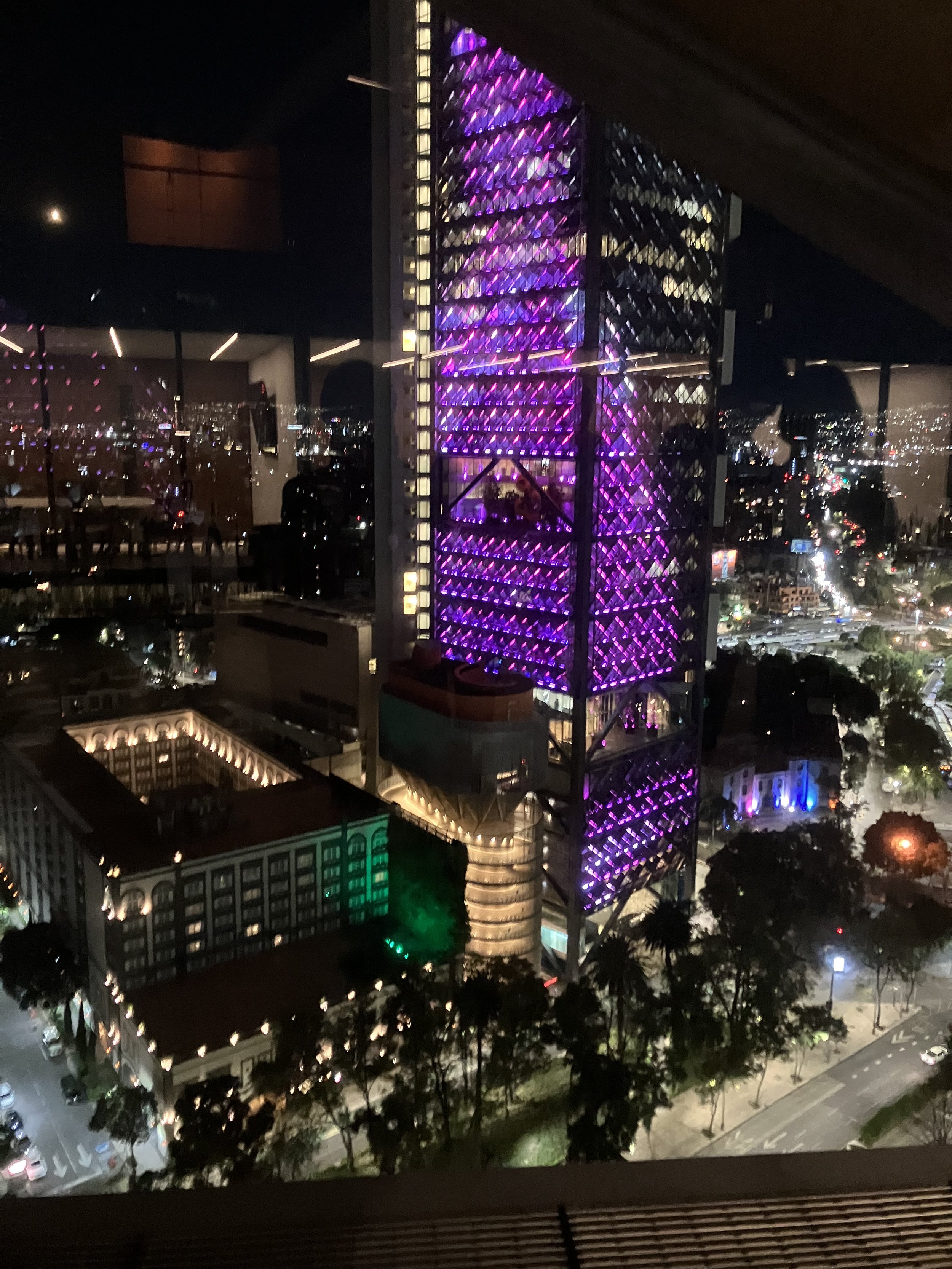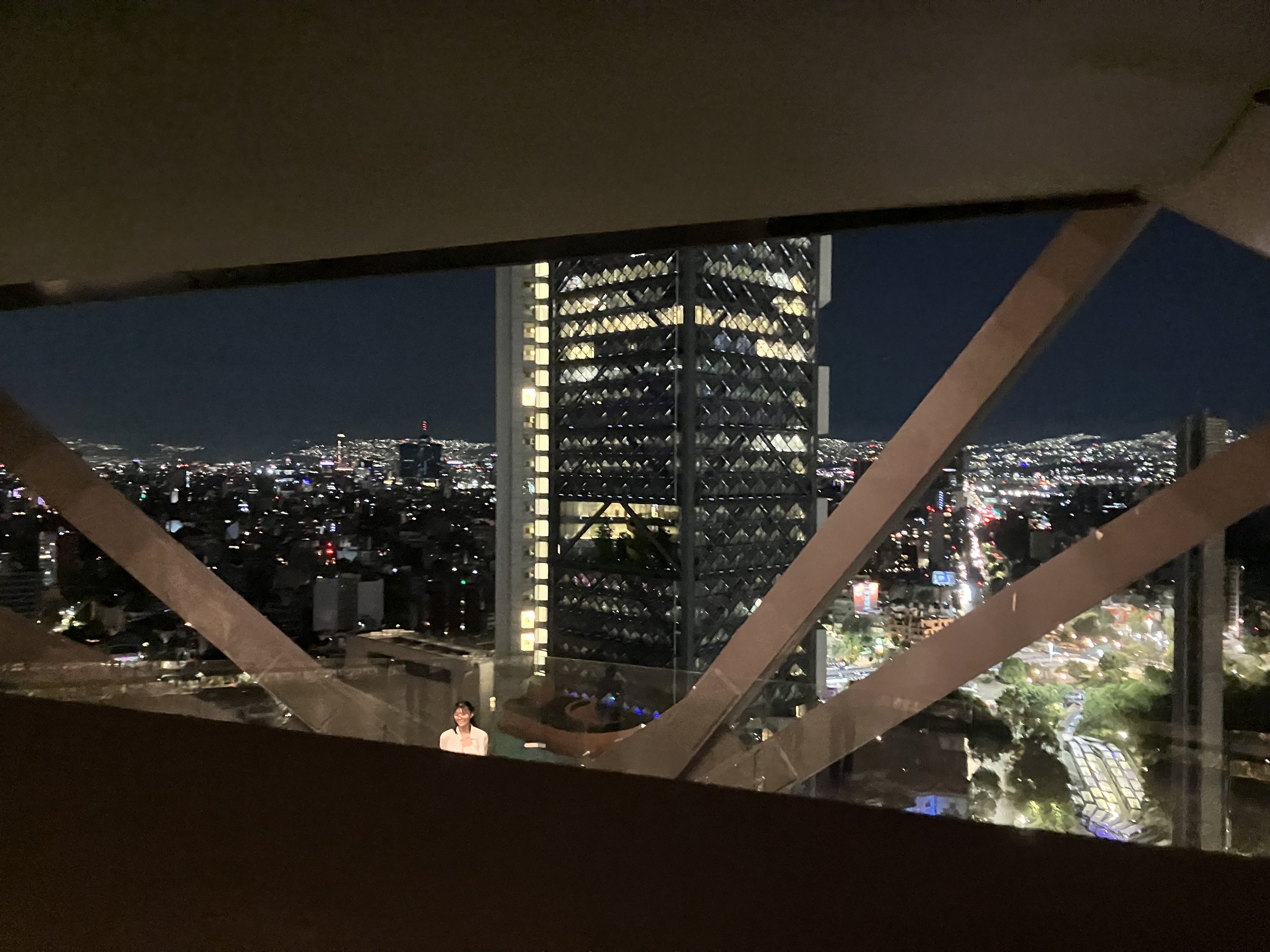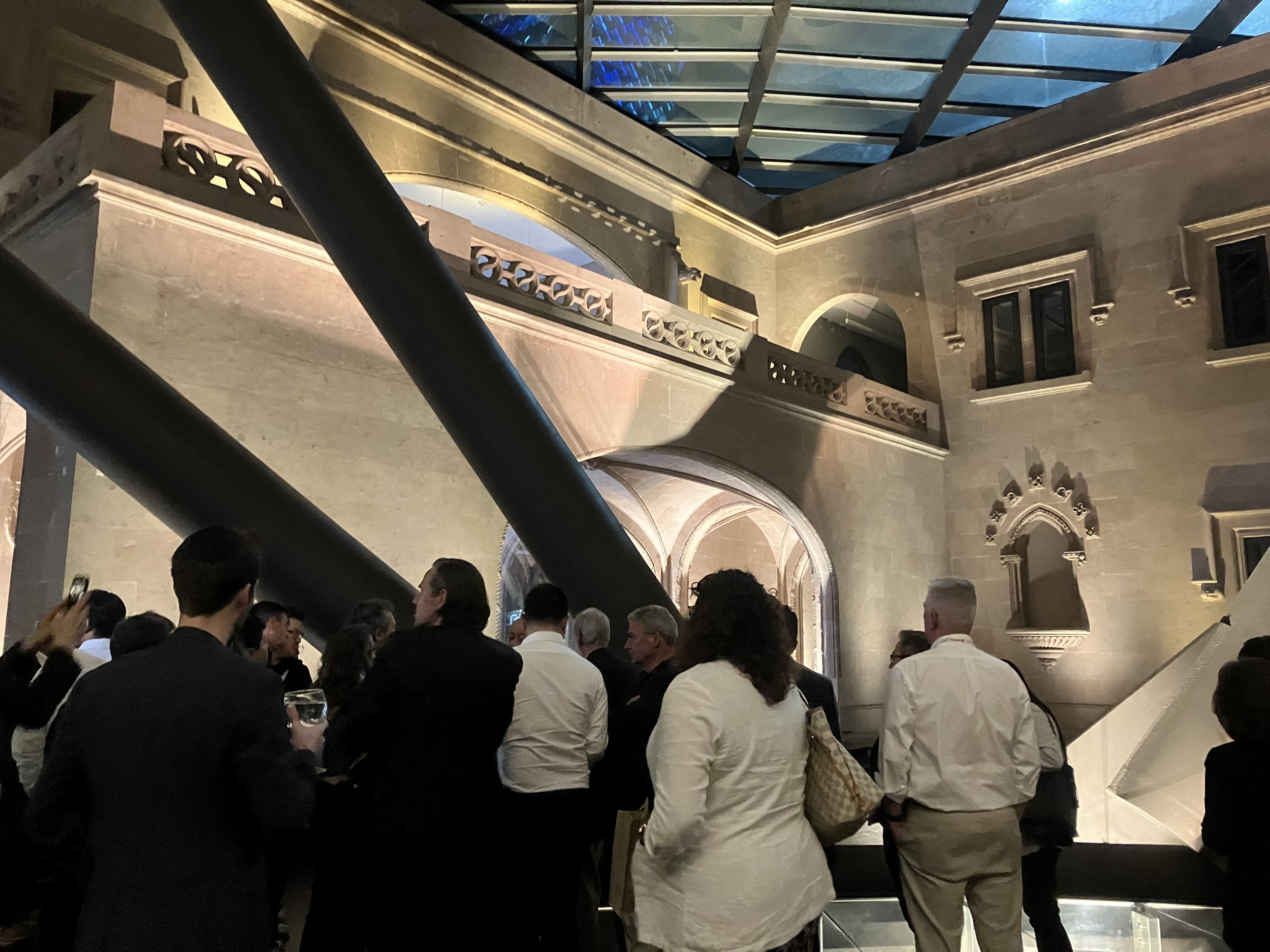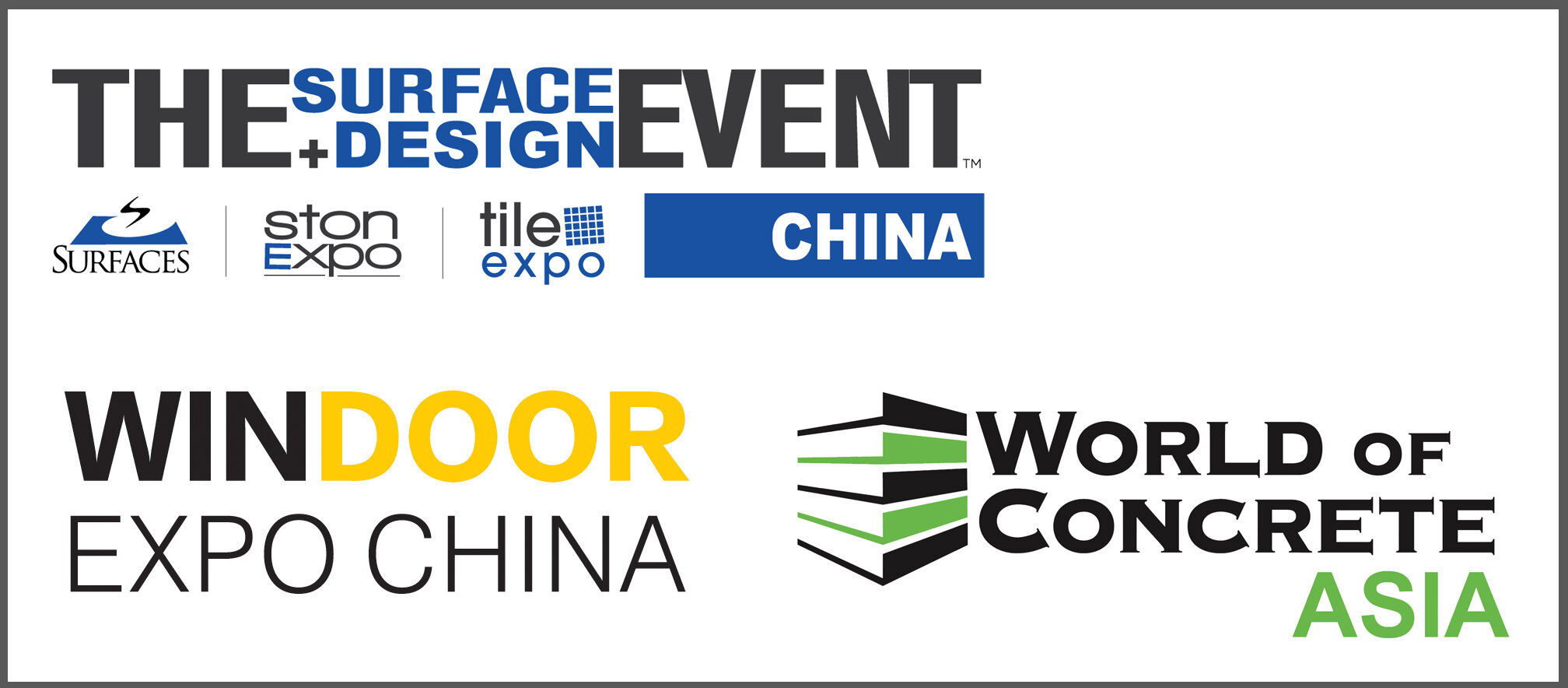AIA International Conference Mexico City 2023: Memories and Visions - Day 2
This article is part of a series looking back in more detail at the 2023 AIA International Conference in Mexico City.
The 4th of November continued the previous day’s talks and discussions on architecture, as well as introduced two expert-led panels regarding sustainability and international work in the region.
From his prior experience as well as inspiration from his father, Victor Legorreta has recognized the importance of a human element in architecture. Two house projects in Cabo align deeply with Mexican design elements and utilized local craftsmanship and natural materials, reflecting the scenic contexts. Community engagement is continued in his mixed-use projects; the BBVA Tower breaks up its office levels with three levels of gardens. The Miyana development, comprising three mixed-use towers, provide separate entrances for different programs while unifying with common spaces and establishing itself as a shared town center.
The event’s first expert panel, held by AIA International and DOW, brought the spotlight on sustainability with a discussion from expert speakers. Christine Bruckner, Director at M. Moser, established design for people and the planet, and acknowledged those before us - indigenous peoples - for setting the foundation. Likewise, our actions are also far-reaching; besides affecting the planet and ourselves, our actions will reverberate through seven future generations.
Next, Alicia Silva, leading green building consultant, stressed the reality of global climate change - no longer a fad in design, but a necessary. Architects must now design for resilience and adaptation, to endure the imminent effects of climate change, as well as mitigation, to turn the tide and head off worse ramifications.
Turning to an optimistic note, Ms. Bruckner referenced the Sustainable Future Award (SFA) as a positive first step. John Sellery, director at M. Moser, briefly introduced a project that won the SFA for Interiors in 2022: The Dyson Global Headquarters in a former power station in Singapore. The human factor was prioritized, transforming the former central turbine hall into a multistory atrium as a social hub. Sustainability was critical as well, with integrated concepts such as utilizing net-zero furnishings, climatic responsive design via daylighting, and efficient energy performance achieving a LEED Platinum rating. With such human and sustainability-oriented aspects to a world-class design, the project stands as a template for how architecture could reverse course and contribute towards a climate solution.
The second expert panel of the day, moderated by architect Steven Miller, introduced leaders from international firms operating in Latin America and their experiences. Samuel Bermudez at Gensler described the office as collaborative at its start, with offices in Mexico, Costa Rica and Colombia and other offices. Initially started as a passion project, the Latin American sector now not only supports other offices but also leads award winning projects of their own. Juan Carlos Pineda at HKS referred to the continuous impetus to innovate. Three pillars of relationship, character, and purpose drive the practice, translated through design excellence, transparency and open communication, and accountability and understanding of the work expected.
Jorge E Mendoza at KPF also stressed collaboration and understanding of the local community as integral. The firm’s focus on Sao Paulo includes the nearby Faria Lima Tower, its undulating façade celebrating the area’s history of demonstration, and the JK Square, a collection of sites connected via an undulating route. Roberto Stark and Pepe Monarrez at Page described their office’s concentration on people-focused leadership and interdisciplinary work. Of note were embassy projects, where understanding function enabled their design to overcome notions of hardness and unfriendliness, and create appealing and inspiring spaces.
Finishing the second day, Enrique Norten of TEN ARQUITECTOS described his own practice focusing on work in the US. Starting with the history of Mexico City, he described the expansive urban growth since the 17th century and the resulting decline of community, replaced by gridlock. The city needs to be rearranged according to dynamic layers of data and feedback. He proposed the so-called 15-minute city, where everything is reachable in 15 minutes; his project Cetram Observatorio transforms existing areas into new places of development.
The second day’s talks, from celebrating local architects and projects to leading discussions on global topics as sustainability and Mexico’s engagement with the global profession, brought a well-rounded discourse to the event. With one last day remaining, expectations were high for a brilliant sendoff.
Written by Marco Lau, M.Sc. Architektur, AIA
Contributor to AIA International Communication & PR Committee

